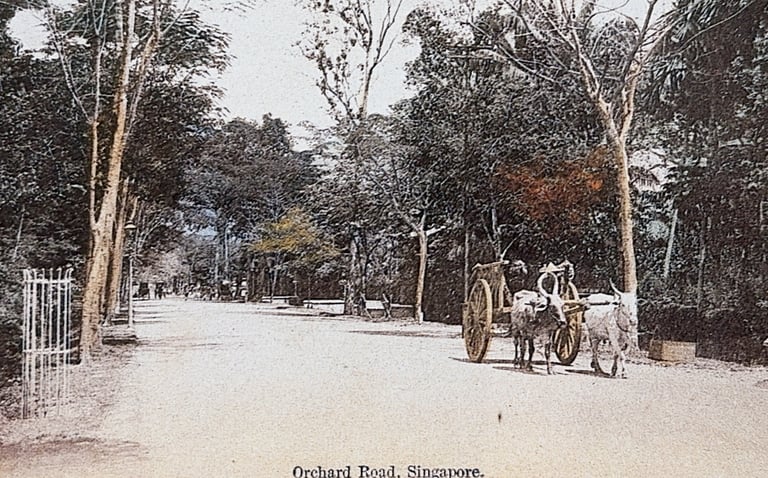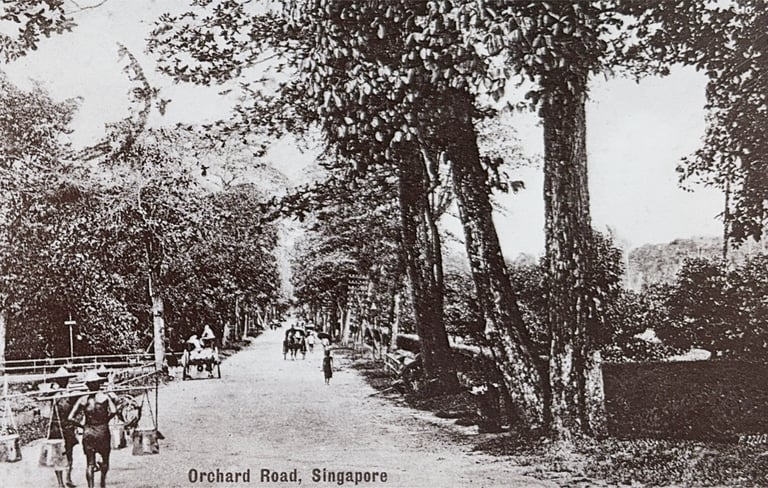The Early Years


Before the time of Stamford Raffles and William Farquhar, Emerald Hill was believed to be fully covered in primary rainforest.
Around the early 1800s, many Chinese immigrants occupied the land with Gambier or pepper plantations to make a living of their own, exhausting the land to its ends.
The trees were cleared between 1819 and 1836 to provide fuel for the boiling of gambier leaves. After decades of exploitation, Emerald Hill became a barren wasteland.
Orchard Road was originally created in the 1830s and got its name from the nutmeg, pepper, fruit orchards and plantations that the road once led to.
A HISTORY OF THE EMERALD HILL ESTATE, SINGAPORE
The Age of Nutmeg
The land mass of Emerald Hill was leased in 1837 to William Cuppage. In 1845, William Cuppage was granted permanent ownership of Emerald Hill, where he planted vast nutmeg plantations and built two villas for himself, called Erin Lodge and Fern Cottage.
Nutmeg has had a long relationship with agriculture in Singapore. After Sir Stamford Raffles established a trading post on Singapore in 1819, he sent over nutmeg seeds and saplings from Bencoolen, on the island of Sumatra, where he was Lieutenant-Governor. Nutmeg plantations were then established along what is today’s Orchard Road in Emerald Hill, Cairnhill and Tanglin.
The arrival of nutmeg as a crop to Singapore was prompted by the desire of the British to challenge the monopoly the Dutch had on a spice that was worth more than its weight in gold.
By 1848, there were 20 such plantations (including those at Emerald Hill & Cairnhill) that were to alter the landscape of the previously forested hills on both sides of what we know today as Orchard Road. The largest estate of 6,700 trees had one of the highest yields and at its height produced some 22,000 nutmegs daily.
In 1865, Our Tropical Possessions in Malayan India noted:
“What had been flower gardens and ornamental grounds of private residences were turned over, and nutmegs planted to within a stone’s throw of the house walls. Besides this, large tracts of jungle, at a distance of four or five miles from town, were bought up from Government, cleared at great expense, and turned into plantations. Some of these newly reclaimed properties… changed hands at exorbitant prices”.
Unfortunately the nutmeg trees became infected with a blight caused by the nutmeg beetle in the late 1860s, which coupled with falling prices, led to many of the areas cleared for nutmeg plantations reverting over time to urban uses.




